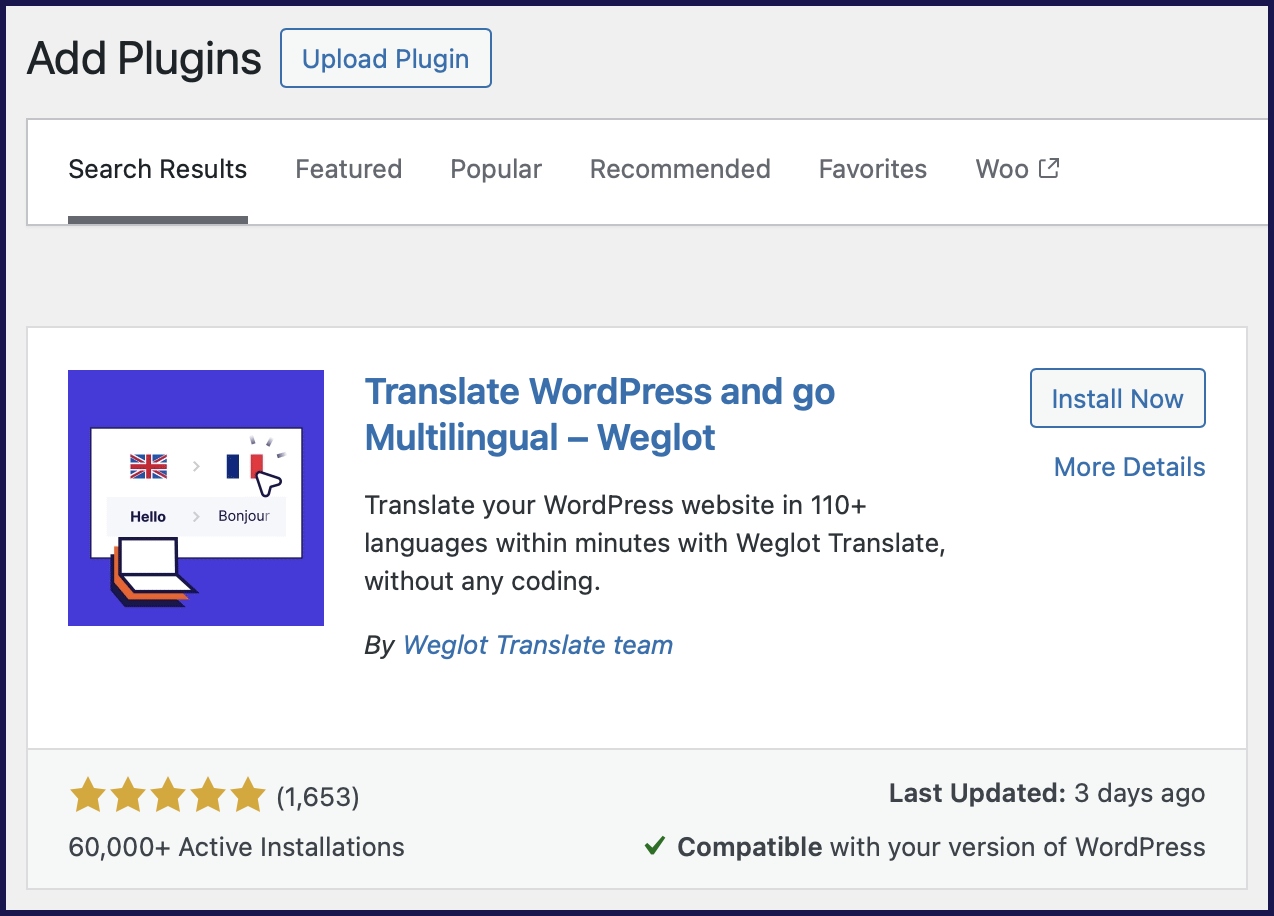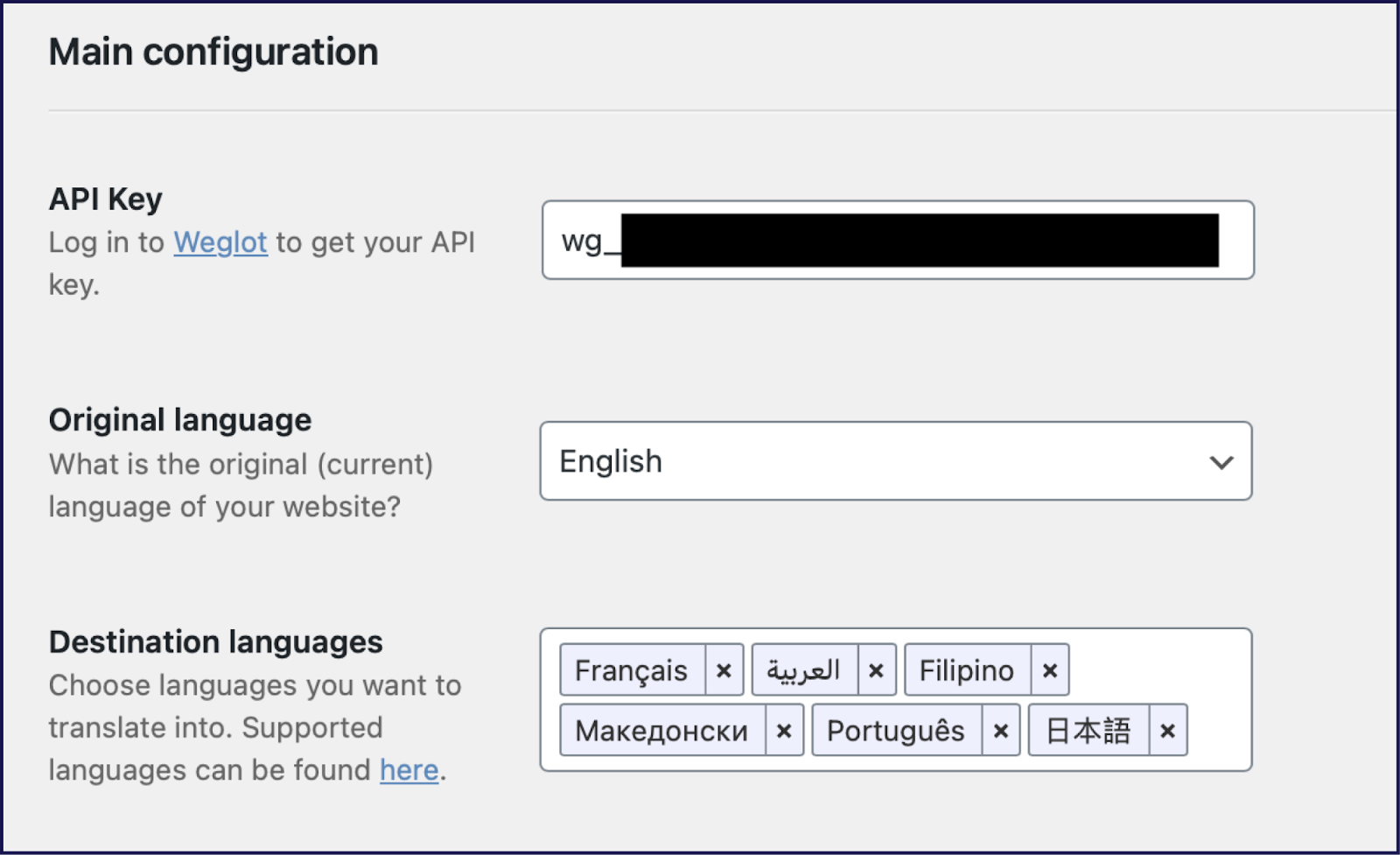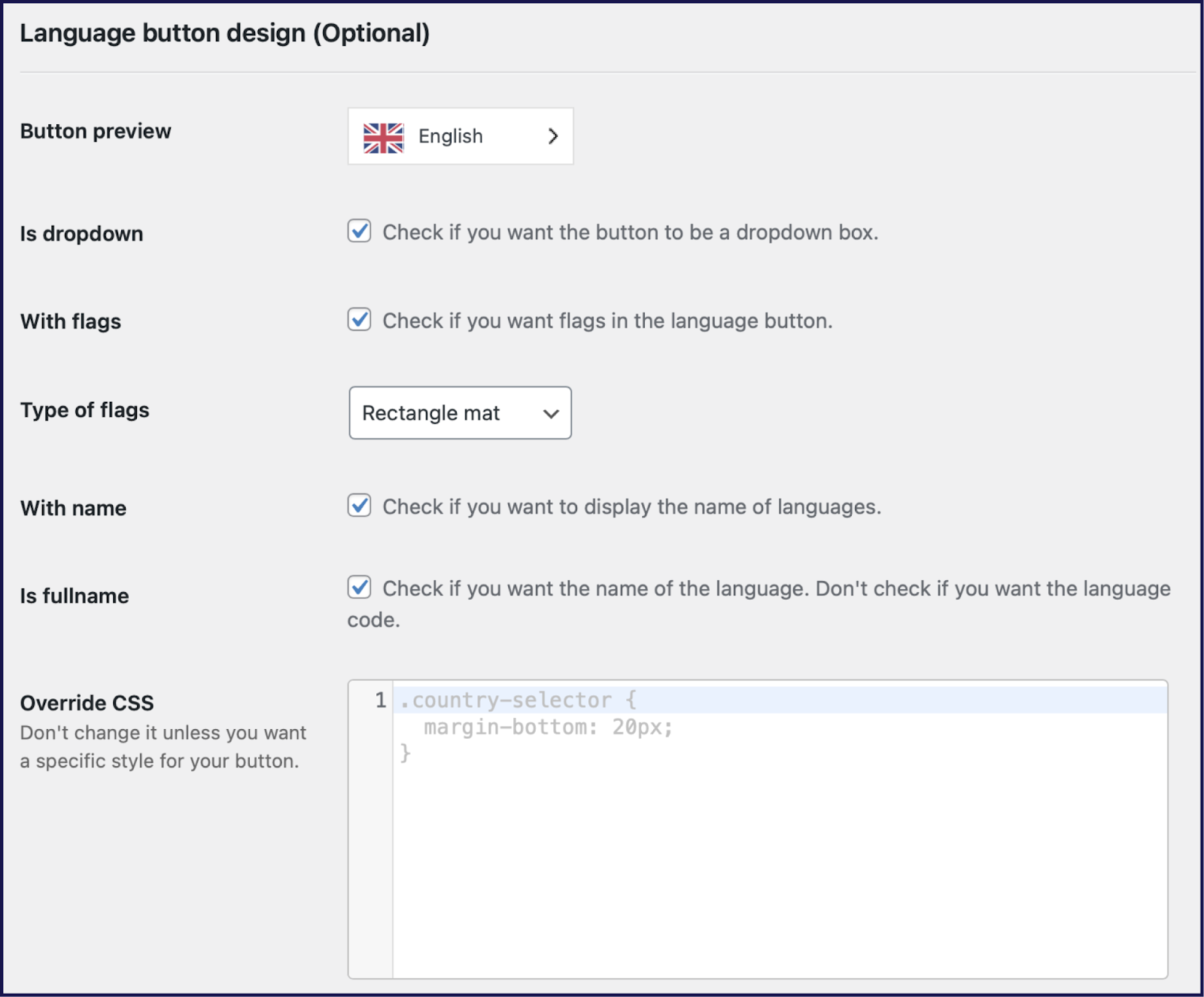The Best Machine Translation Software You Can Try in 2024

When it comes to text translations, businesses now have a credible alternative to engaging a human translator: using machine translation software.
Machine translation software (known as MT software) is an artificial intelligence-based tool that provides automated translations of text between different languages, such as from English to Spanish or vice versa. Although machine translation software didn’t have the highest translation accuracy when it was first developed, technological improvements over the decades allowed such software to do a pretty accurate job.
As a result, this category of software is often integrated into computer-assisted translation (CAT) tools, and used by businesses involved in international projects. For example, international businesses intending to localize their web pages may use machine translation software to translate large amounts of text at scale.
However, MT software isn’t used only for translating websites. It can also translate documents required to maintain successful international business relationships.
The financial upside of investing in translation is clear: According to a survey by Common Sense Advisory (now known as CSA Research), Fortune 500 businesses that spent more on translation were 1.5 times more likely to report an increase in total revenue than their counterparts that didn’t.
Read on as we delve into how machine translation is shaping international business.
Why Website Translation Matters
There’s a reason why some of the largest corporations on the market make translation a priority: it’s profitable.
For starters, native English speakers make up less than 5% of the global population. On top of that, English reaches around only 16% of the world, though 52% of websites are written in it.
Despite the Internet’s skew toward English speakers, consumers are 73% more likely to purchase something on a website in their native language. Microsoft, for example, has translated its products into over 90 languages, Toshiba into over 30, and Apple into 40.
In the long run, not only will translating your website boost sales rates, but it’ll also enhance your SEO. As we’ve just said, more than half of Google searches are non-English, so how are you supposed to outrank international competitors if you’re not creating content in your target audience’s native language?
The answer: You can’t. That’s why an easy-to-use solution is crucial to localize your site to reach a wider audience and to enhance multilingual SEO.
Not only that, but your non-English speaking visitors are more likely to engage with your website when they’re reading web content in their mother tongue. Over 56% of consumers said that getting information in their own language is more important than price.
While most modern browsers include the functionality to integrate with common online translators, native speakers will feel much more at ease knowing that a website has been originally served to them in their own language, rather than having to translate text from a foreign language manually using their own translation apps.
Take respond.io as an example. The customer conversation management platform uses Weglot to translate its website into fifteen new languages. Since using the solution, the site has increased traffic and impressions growth 2x. If respond.io got these results, there’s no reason why you can’t enjoy similar results too!
The Evolution of Machine Translation into 2024 (And Beyond)
Let’s be honest: When machine translation was first launched, it wasn’t the best.

The first machine translation software, which came about in the 1970s, used rules-based machine translation (RBMT). Such technology translated text word-for-word using a set of grammatical rules and the relevant language pair dictionary. However, this often resulted in stilted translations that weren’t always the most readable, let alone usable.
As a result, machine translation got a bad rep almost right off the bat. Unimpressed by the poor accuracy of machine-translated text, people began to dismiss machine translation as being inferior to “proper” (read: human) translators.

From Rules-Based Machine Translation to Statistical Machine Translation
Fortunately for machine translation providers, machine translation began shedding its negative image as the technology evolved. After RBMT, came statistical machine translation (SMT), which translates text by analyzing existing human translations, known as bilingual text corpora. Then, it uses prediction algorithms to determine the best way to translate text in any given situation.
SMT was a major improvement over RBMT, but its accuracy was still lacking at times. However, development didn’t stop there. Today, the latest and greatest machine translation technology available is neural machine translation (NMT), which uses complex deep learning models to translate text.
Enter Neural Machine Translation
Neural Machine Translation (NMT) is capable of generating high-quality translations with the help of sophisticated language translation algorithms. These translations are not only more accurate but also sound more natural than the translations produced by RMBT and SMT technologies.

These days, the effectiveness of NMT has quelled most of the opposition towards machine translation. Even objections such as “But machine translation can’t pick up or translate text in images and PowerPoint slides!” have largely been silenced — advanced machine translation tools can do just that.
Should You Use Machine Translation Software for Your Business?
Machine translation is now widely used in the market, being a lifesaver for international businesses that need access to consistently accurate translations in the most efficient way possible. Even professional translators adopt automated translation technology to streamline and accelerate the translation process!

But why? Here are some benefits of machine translation software, which your business can also enjoy:
- Easy to use: With machine translation software being so simple to operate, you won’t need a tech background to use it like a pro. Fire up the software or platform, copy/paste your source text into it, and set your target language, and you’ll get the translated text in real-time.
- Faster results: As mentioned in the previous point, machine translation software can translate text in seconds. On the other hand, human translation can take hours, or even days, depending on the volume of text that needs to be translated.
- Reliable: While the accuracy of translations produced by different machine translation software may vary, these translations are generally reliable. That’s because such software is typically vetted by expert translators and native speakers before being released.
- Great value for money: It’ll definitely cost a lot less to invest in machine translation software than to hire a professional translator – especially if you’re looking to translate uncommon language pairs, or need translations within a short turnaround time.
- Seamless operation: Some machine translation software can integrate with other platforms for smooth translation workflows. No tedious copy/pasting of text between software and platform needed!
5 Best Machine Translation Software Options in the Market
At this time, there isn’t a single machine translation software that can perfectly cater to all needs and use cases. Each software has its pros and cons and may be best suited for meeting certain language translation objectives, content formats, and target audiences over others.
Here are 5 of the best machine translation software options in the market, and how their technological features influence their translation quality:
1. Google Translate

Google Translate needs no introduction, being probably the most well-known machine translation software out there.
Launched in 2006, and currently supporting 133 languages, the translation tool previously used SMT to churn out word-for-word translations.
Since then, however, Google has abandoned SMT in favor of the more accurate NMT, resulting in ever-improving translation quality. Dubbed Google Neural Machine Translation (GNMT), Google’s proprietary machine translation technology uses recurrent neural networks to translate entire sentences while retaining their contexts as much as possible.
Google Translate will also soon offer more contextual translation options. So if you’re looking for a place to park your car or you’re hoping to take a walk in the nearest park, the platform will give you the context you need to use the right words and not get lost in translation. The first languages to feature this include English, French, German, Japanese, and Spanish.
2. DeepL Translator

DeepL Translator is an NMT service developed by Linguee GmbH (now known as DeepL GmbH), a German business that focuses on developing machine translation technology through deep learning.
DeepL Translator was launched in 2017 and currently offers 32 languages. It extensively studies and learns the best translation options from reliable linguistic sources.
Thanks to its use of artificial intelligence, DeepL Translator can deliver more precise and nuanced translations compared to its peers. It may truly live up to its own claim of being “the world’s most accurate translator.”
In January 2024, DeepL added Arabic—the first language it’s supporting that’s written left-to-right—which is currently available on the web translator, along with the desktop and mobile apps. As the 5th most spoken language in the world, busines
3. Bing Microsoft Translator

Bing Microsoft Translator is based on Microsoft’s proprietary machine translation system. Currently offering 40 languages, it relies on the latest NMT technology to offer the most accurate translation.
Like most machine translation software developers, Microsoft has focused its research efforts on delivering smarter machine translations that match natural language use. For example, Bing Microsoft Translator employs an attention algorithm to analyze the order in which words should be translated for the most accurate translation results.
In 2023, Microsoft upgraded its Custom Translator platform, where its team of experts have developed a new set of algorithms and techniques to improve the accuracy of the Custom Translator.
It has also integrated with Cortana, supporting languages including Simplified Chinese, German, English, French, Spanish, Italian, Japanese, and Portuguese.
Advanced offline translation is also now available through Microsoft Translator, allowing users to download offline language packs so they can continue using the platform even when they don’t have a steady Internet connection.
4. SYSTRAN Translate

SYSTRAN has a long history. It was founded in 1968 and is possibly the first-ever business to offer commercial machine translation services.
And this pioneer in the field hasn’t rested on its laurels: this machine translation provider regularly updates its SYSTRAN Translate tool with cutting-edge machine translation technology and features. For example, SYSTRAN’s latest pure neural machine translation (PNMT) engine models the entire machine translation process through an artificial neural network for highly accurate translations.
It currently supports 55 languages and has 140 combinations.
5. Amazon Translate

For those in the know, Amazon isn’t merely a leading ecommerce marketplace: it also supplies machine translation through its Amazon Translate tool.
According to the Amazon Translate website, this NMT service was created to provide fast, high-quality, and customizable language translations at an affordable price.
Amazon constantly enhances its datasets to deliver the best possible translations regardless of source text length. At the same time, Amazon Translate’s Active Custom Translation feature allows users to import their own translation data for customizing translations according to their preferences.
The provider currently supports 75 languages.
Use Machine Translation Software Like Weglot to Localize Your Website
With steady improvement in machine translation technology over time, MT software has become a strong option for businesses with translation needs. That said, the ideal, one-size-fits-all machine translation service doesn’t exist (not yet, anyway!)
If you’re shopping around for a machine translation language service, the best approach would be to try a few different translation tools and assess whether they meet your business’s specific needs before making a financial commitment.
Also, keep in mind that MT software isn’t meant to completely replace human translation. After you’ve completed the first round of translation using MT, you may want to have a professional translator review and fine-tune the translation to ensure it is fit for purpose.
While the above machine translation software options can decently translate text, translating a website calls for a more elaborate approach. Using a dedicated website translation solution that combines the speed of machine translation with direct integration with your website platform ensures accuracy and efficiency. Why? You won’t need to waste hours copying/pasting translated texts back and forth. And, of course, a good website translation software will actually display the translated content of your website too.
Weglot is the perfect solution for providing a first layer of machine translation for website translation projects. It uses the best of leading machine translation software, such as DeepL Translator, Microsoft Translator, and Google Translate, to effortlessly translate your website with a high degree of accuracy thanks to post-editing features available within your Weglot Dashboard.

Weglot integrates with WordPress, Shopify, Webflow and all other popular website platforms (and custom-built websites) to translate your website content and display these translations on your website, giving you the full package when it comes to website translation.
It is also built for team collaboration among your teammates and professional translators, making it convenient for you to get expert eyes and edits on your translations before rolling them out.
Installing Weglot onto Your WordPress Website
Now we’ve explained why Weglot is the best website translation software, here’s how you can install it onto your website.
After you’ve logged into your WordPress dashboard, head to the WordPress plugin directory, find Weglot in the search bar and install it.

Click activate.
Now, enter the API key provided by Weglot (to find this, you’ll need to log into your Weglot account).

Once you’ve entered the API key, enter the destination language (also known as your target language). If you’re just trialing Weglot to test it out, you only get access to one language, for one site, where you can translate up to 2000 words. If you want more than that, you can upgrade your plan from your Weglot Dashboard.
Weglot matches your chosen language pair with the best available service for the job – including Google Translate, DeepL, and Microsoft Translate. So whether you’re translating between Dutch and German, Italian and Arabic, or Russian and Portuguese, you can be certain that your first layer of machine-translated text will always be the highest-quality translation available.
Choose how your language buttons will appear on your website. You can customize these options and decide whether you want them with or without flags. The translation button can be readily displayed on your website’s menu, so customers can easily switch between languages.
Alternatively, you can post your language translation options in your sidebar, or in the bottom right-hand corner of your website. Save your changes and proceed.

You can now view the language buttons on your website.
Hit the menu to show which languages you can translate your website into. Weglot will translate your site within seconds, including content controlled by your widgets. If you want to make translation corrections, navigate to the Weglot Dashboard.
As you can see in the example screenshot below, visitors can toggle between English and Spanish using the menu in the bottom right corner.

View each string and edit your translations. You can override Weglot’s automatic translations and save your edits.
Weglot displays all text on your website, organized by languages and web pages. You can also view your translated images and meta tags. From here, you can invite collaborators to work from your Weglot Dashboard to update and optimize translations.

So, there’s your rundown on how to install and use website translator software on WordPress.
Why Machine Translation Software Is Your Passport to International Success
Machine translation software has evolved tremendously, moving from rudimentary rule-based systems to sophisticated neural machine translation models. This leap in technology makes it an invaluable tool for businesses looking to scale internationally, both efficiently and affordably.
Weglot offers an integrated, high-quality translation service that combines the best of machine translation software like DeepL, Microsoft Translator, and Google Translate. With easy installation and team collaboration features, Weglot simplifies website translation without compromising on quality.
With its unique mix of the authority of professional translation and the speed and reliability of machine translation, all simple to manage through your Weglot Dashboard, you’re sure to provide a high-quality localization service and enhance your customer experience with Weglot’s online translation platform.
Simply sign up for a 10-day free trial (no commitment) of Weglot to get started.



















